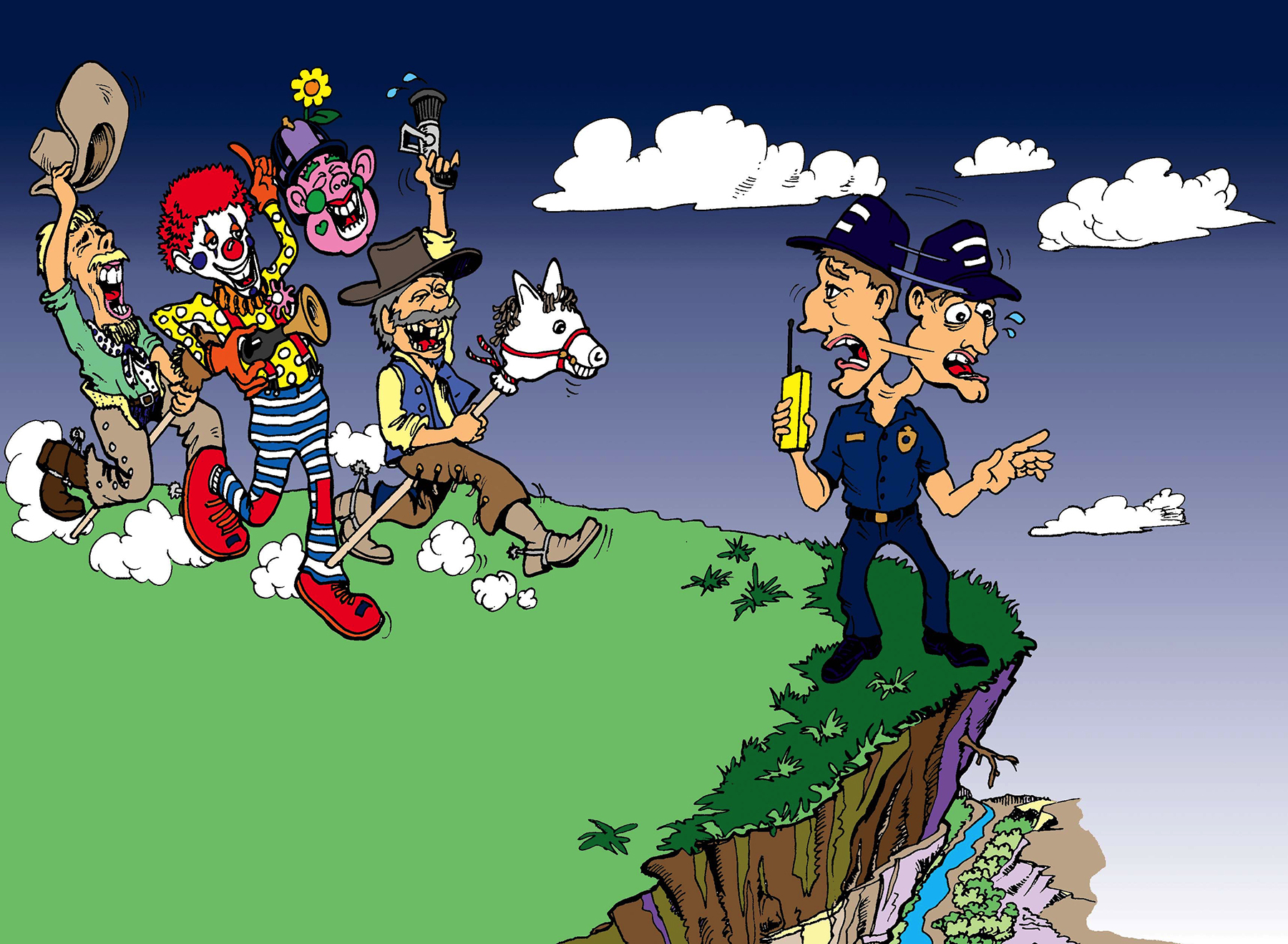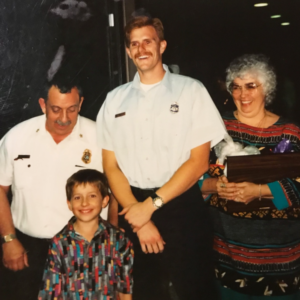The Price of Polarity: Arguing about safety & risk management makes us look like clowns.
March 17, 2025
The Price of Polarity: Arguing about safety & risk management makes us look like clowns.
By Chris Stewart
B Shifter Buckslip, March 18, 2025
Once again, the American Fire Service is embattled in a conflict that proves counterproductive for leaders and firefighters. Today’s environment poses enough challenges to our work and our ability to execute it. Politicians and bureaucrats constantly fight against us, impeding our ability to execute our mission. Local union leaders have morphed into hack politicians, forgetting they are firefighters first. Instead of a collaborative focus on improving our service delivery holistically, we engage in online arguments that pit community lives against firefighter lives. We resort to evangelical political theater on social media as some try to convince others that if only we placed search above all else, we could keep people from dying.
This conflict distracts us from our commitment to improving service while protecting firefighter health and welfare. There is no sane world governed by sober individuals that can justify perpetuating this conflict under the pretense of making us better at our jobs. Service to the community and firefighter safety are equally important, as each supports our ability to do our best for the people we serve. The question we should be asking is: How do fireground safety and risk management make us better and help us perform our work?
Fireground Safety
Fireground safety relies on incident commanders creating a plan to successfully do the work while protecting firefighter welfare. Two simple concepts reinforce why fireground safety matters.
- If we can’t protect ourselves, we can’t protect Mrs. Smith.
- When we get in trouble on the fireground, we completely disregard Mrs. Smith.
By working in a manner that reduces or eliminates the need to save each other, we are in a much better position to take care of any victims. Our approach must include an incident action plan based on rapid fire extinguishment. An IAP that prioritizes fire control creates better conditions for victims and better environments for firefighters to locate and remove them. If instead one of us gets caught in a mayday situation, every firefighter will turn their attention from their assigned work to saving one of our own—the worst possible situation for victims.
If we do not place water on the fire and/or have no plan to do so, we should expect conditions to worsen exponentially. If ventilation increases due to our actions or the structure’s failure, conditions will progress until the fire consumes everything flammable, including us.
Fireground safety must include a system that accounts for the position and function of everyone working the incident. When responders show up with predetermined assignments that are disconnected from the incident’s actual conditions and critical factors, there is no single IAP and, thus, no accountability. Accountability is essential for ensuring that tasks are performed in the correct positions and for quickly identifying personnel when a mayday is declared. This enables the IC and working crews to respond effectively using the known help order, minimizing communication during critical moments and preventing confusion about who is where. Crews can solely focus on managing the mayday rather than the IC trying to unscrew themselves.
Risk Management Plan
The simplest, most robust risk management plan is part of a system that connects directly to size-up, critical factors and incident action planning to achieve the tactical objectives. The RMP defines risk tolerance:
- We will risk a lot to save savable lives
- We will risk a little, in a calculated manner, to save savable property
- We will risk nothing at all for what is already lost
The RMP is useless without a system for recognizing the critical factors that determine risk. It is also useless if it doesn’t connect to a system for defining strategy and a single, clearly communicated IAP.
We perform size-up and determine critical fireground factors in our initial and continuing evaluation to help determine whether life safety is a critical factor. If life safety is a critical factor, we should be willing to take appropriate risks to save savable lives. Some argue we can’t determine who is savable. While our ability to predict survivability and tenability is limited, we know that fully involved, flashed-over compartments, areas or structures are unsurvivable. The scientists have been very clear on this. We should write off these areas as nonviable for victims, work to extinguish the fire, and then address exposed areas that have greater potential for savable lives.
Life safety is not a critical factor if every space is consumed with flashed-over conditions. In these instances, we’ll utilize the fact that we should take less risk to protect any savable, exposed property. This is why during our initial size-up, 360 size-up and ongoing evaluation, we always look for potentially tenable spaces to engage in search efforts coordinated with fire attack. When we find those tenable spaces, we should search; when we don’t, we can’t force it.
In instances when we’ve completed search operations and have communicated an all clear, we should not continue to tolerate the same level of risk when trying to save property. We may take a calculated ass-kicking to access protected spaces and isolate or remove victims (extinguishment and search). However, we must not do the same once we know the occupancy is clear of victims. We should risk only a little in these cases to save savable property.
When fire conditions have thoroughly consumed a structure, destroying its contents and structural components, we should recognize that it is lost. Anyone who may have been inside is also lost. We cannot unburn what has been consumed, and we cannot resurrect those who have been incinerated. Any risk in these situations is unreasonable and stupid. We should risk nothing at all for what is lost.
Safety and risk management are not independent concerns on the fireground; they must be part of an overall system that helps us determine what level of risk is reasonable and when. Risk-taking, when there is a significantly increased or guaranteed chance for a firefighter mayday, will make us less effective at rescuing anyone. We must integrate safety and risk management into our decision-making and incident management to drive better outcomes for victims and firefighters. Anything less creates self-inflicted injury or death and poor performance for our communities.
Bruno taught us early and often as officers: Beware of the rescue fairytale. The fairytale implies a firefighter can give their life so others may live. If the conditions are so bad that they overcome and kill a protected, trained firefighter, there is zero chance an unprotected victim can survive those same circumstances. It hasn’t happened, and to say otherwise is complete bullshit.
Firefighters have one of the most difficult jobs. We are expected to save everyone, even in the most adverse conditions, and then survive to respond to the next call. Realistically, we must be prepared to save as many people as possible, survive to finish the job, and move on to the next one. If we can
To ensure we can save as many lives as possible, we must protect ourselves from getting into situations where we have to save each other. The argument that only victims matter reflects significant dissonance and has proven physically destructive for many firefighters. If we can’t protect ourselves, we can’t protect anyone else.

Chris Stewart was hired by the Phoenix Fire Department in 1991. He spent much of his career as a firefighter and company officer working on busy engine companies. As a chief officer, he worked across many divisions of the PFD. Chris retired from the department in September 2022 and is now a lead instructor for the Blue Card Hazard-Zone Incident Command Training & Certification Program. He serves on the technical panel for UL-FSRI’s “Study of Coordinated Fire Attack Utilizing Acquired Structures.” He has been appointed to represent Blue Card on the NFPA 1700 Technical Committee, “Fundamentals of Fire Control Within a Structure Utilizing Fire Dynamics.” In November 2022, Chris was appointed deputy chief of the Rio Verde Fire District, where he leads the operational response, training and customer service efforts for the fire district in this growing community. Chris is married to his high school sweetheart and has two sons attending Arizona State University.



